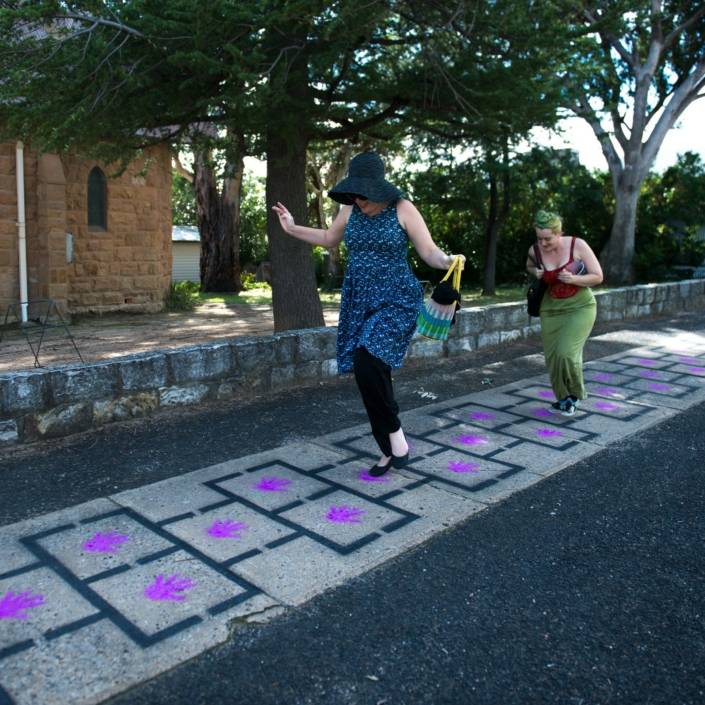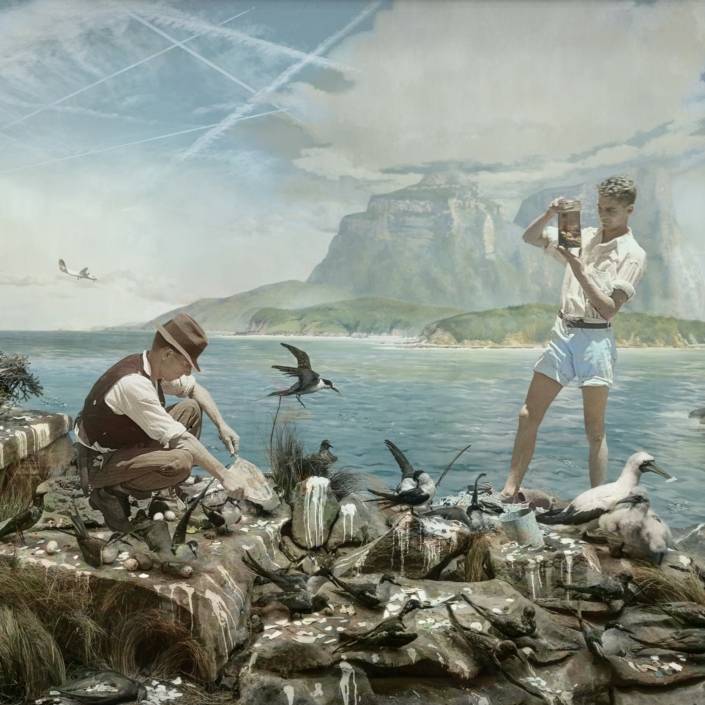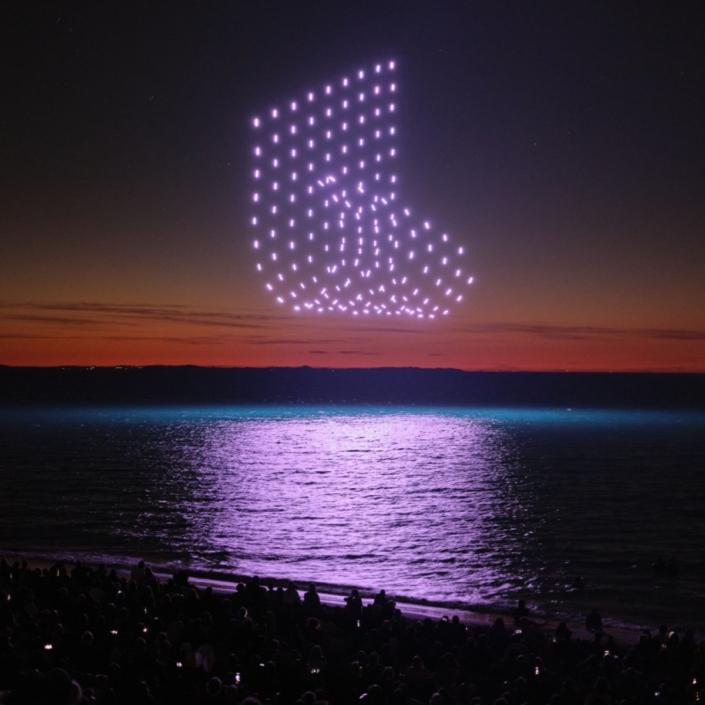NATSIAA 2017: Pick of the crop
Our writers select the highlight works from the 2017 National Aboriginal and Torres Strait Islander Art Awards.
Words: Sasha Grishin and Nic Brown
Gunybi Ganambarr
Gunybi Ganambarr is one of the most popular Yolnu artists of the past decade who, while adhering to tradition, has boldly experimented with unorthodox materials and techniques. He was born in 1973 and worked for a dozen years as a builder and only in 2002 started carving in the context of the Buku-Larrngay Mulka Art Centre. In the following years, he pursued radical experimentation with carved double-sided barks, heavily sculpted poles, incised barks, sculptures inserted into poles as well as carving into discarded industrial rubber belts. At a time when many were speaking of the decline of Yolnu traditional bark painting, Ganambarr emerged as an adventurous and provocative artist whose work did not appear to violate tradition.
His Buyku in this year’s NATSIAA relates to the Yolngu use of the hollow pole as an ossuary or bone container erected for a dead kinsman, sometimes up to a decade after their death. The designs on these hollow coffins relate to the clan markings of the deceased. Ganambarr has allowed the wood’s natural shape to dictate the form within, which he has then articulated with ochres and earth pigments. The organic sculptural appearance of the work is enhanced with the optical vibrancy of the surface design. It is a gentle and memorable piece that invites the eye to circumnavigate the sculpture.
Sasha Grishin
Timothy Cook
When you encounter a painting by Timothy Cook, it is a memorable experience with a striking simplicity, directness and a sense of completeness within itself, in the same way that we could speak of a Mark Rothko or a Rover Thomas. Cook is a Tiwi artist who was born in 1958 on Melville Island and has remained there working at Milikapiti, where he is connected to the Jilamara Arts and Crafts Association.
His imagery draws on circles, crosses and simple concentric designs associated with the imagery of the Kulama (yam ceremony), Pukumani (funeral ceremony) and stories of Purukapali, one of the great mythological Tiwi ancestral figures. These are the designs that are also encountered on tungas, the practical everyday stringy bark bags. All of the designs go back to body painting, but in Timothy Cook’s art they are given licence to grow and develop without ever departing from their ceremonial purposes. The use of natural crushed ochres gives the surfaces of his paintings a wonderful textural quality, a tactility that is enhanced on close viewing of the work.
The painting Tiwi Jamutakari, Kumunupunari, Tiyari, literally brings together the three main Tiwi seasons, Jamutakari (the wet season), Kumunupunari (the dry season) and Tiyari (September to November, a season of hot weather and high humidity). The seasons are gathered in concentric bands leading to a dark centre with vivid white dots. We descend into this visual vortex while exploring a dynamic and expanding universe.
Sasha Grishin
Pedro Wonaeamirri
Still only a young man in his early 40s, Pedro Wonaeamirri has been painting at the Jilamara Arts and Crafts at Milikapiti on Melville Island since 1991, when he was seventeen-years-old. He worked alongside other noted Tiwi artists, such as Kutuwulumi Purawarrumpatu and Taracarijimo Freda Warlapinni, and became a spokesperson for his people. He is also an artist and dancer, attaining both a national and international reputation.
Wonaeamirri consciously works within the Tiwi tradition employing body designs, which he explains are an extension of ornate pukumani ceremonial body designs that are found on Pukumani funerary poles, Yimawilini bark baskets and associated ritual objects made for the Pukumani ceremony. There is a rhythmic, performative aspect to his art with the designs sung into being. He collects traditional natural ochres from his country, grinds them himself, and employs the kayimwagakimi (the traditional Tiwi iron-wood comb), with a strong field of colour that is then systematically covered with white dots applied in neat geometric rows. He paints on canvas, paper, bark and ironwood poles and is also an accomplished printmaker who has worked with the Australian Print Workshop in Melbourne.
Wonaeamirri’s Mulipinni Amintiya Pwoja diptych with its body design drawings on paper at this year’s NATSIAA is striking in its scale, presence and the absolute confidence of touch. It is work which is remarkable, direct and possesses a mesmerising power.
Sasha Grishin
Alec Baker
Alec Baker’s Maralinga story is a potent memorial to the sustained devastation of the country and people of the Maralinga Tjarutja Lands in the far west of South Australia. More than 60 years ago the first British atomic bomb tests performed in Maralinga exposed more than 1,200 Anangu (Aboriginal people) to radiation, resulting in premature death, diarrhoea, vomiting, skin rashes, blindness, birth abnormalities and longterm illnesses including cancer and lung disease. Of his work the Yankunytjatjara artist states “This is my story about Maralinga”.
Baker’s ink drawing reveals a heightened sensitivity that surpasses his paintings for which he is better known. The fragility of line-work is powerful and evokes an enduring sense of grief for the past, present and emerging. The senior desert man’s brush traces around mushroom clouds that morph into blackmist tears and crystallize into blue-green atomic glass. Hills adorned with trees appear like tombstones. The land is sterile – contaminated – and generations are affected. Baker says, “It’s a sad story, but it’s important to keep talking about that story so we don’t forget and so it never happens again”.
Nic Brown
David Frank
David Frank’s figurative paintings are narrative driven and created from a blend of observation, memory and imagination. Opal miners, shortlisted for this year’s 34th National Aboriginal and Torres Strait Islander Art Awards, demonstrates a recent shift in subject matter, from memories of Frank’s time employed with the South Australian Police to commentary on opal mining at Coober Pedy and its impact on the health of the land and people.
Coober Pedy, the ‘opal capital of the world’ and its alien landscape of mine shafts and mullock mounds, is a small town about three hours drive south-east of the artist’s home Indulkana in the Anangu Pitjantjatjara Yankunytjatjara (APY) Lands, in the far north of South Australia. In Frank’s painting the excavated landscape is cloaked in white paint and punctuated with repeated figures dressed in rock dust-coloured uniforms and wearing fossicking packs and safety hats. Dream-like, the figures are chasing rainbows: elusive psychedelic stones of fortune, just out of reach.
Nic Brown
Tiger Yaltangki
In his fifth consecutive year as a finalist in the National Aboriginal and Torres Strait Islander Art Awards, Tiger Yaltangki’s largescale painting Malpa wiru (good friends), reveals his mastery of controlled chaos. The artist presents a mash-up of Aboriginal and popular culture. His work celebrates rock music and science fiction whilst paying homage to his Anangu culture and community life in his home Indulkana, located in the Anangu Pitjantjatjara Yankunytjatjara (APY) Lands in the far north of South Australia.
Hybrid creatures – created from a medley of self-portrait, Mamu (Pitjantjatjara spirit being), television characters from Dr Who and The Mighty Boosh, and ‘rock and roll’ stars from iconic bands including AC/DC, Led Zeppelin and Pink Floyd – seem to sing, dance and strut across Yaltangki’s canvas-stage, while disembodied hands wave and clap in time. The motley figures are set against a relatively subdued backdrop of Ngura (Country), featuring the Apu Hills and nearby trees and waterholes that are depicted with a pastel desert-palette of pinks, oranges and yellows.
Nic Brown
This article was originally published in Art Collector issue 84, October to December 2017. Image: David Frank, Opal Miners. Synthetic polymer paint on linen, 112 x 168cm. Courtesy: the artist and MAGNT, Darwin.







